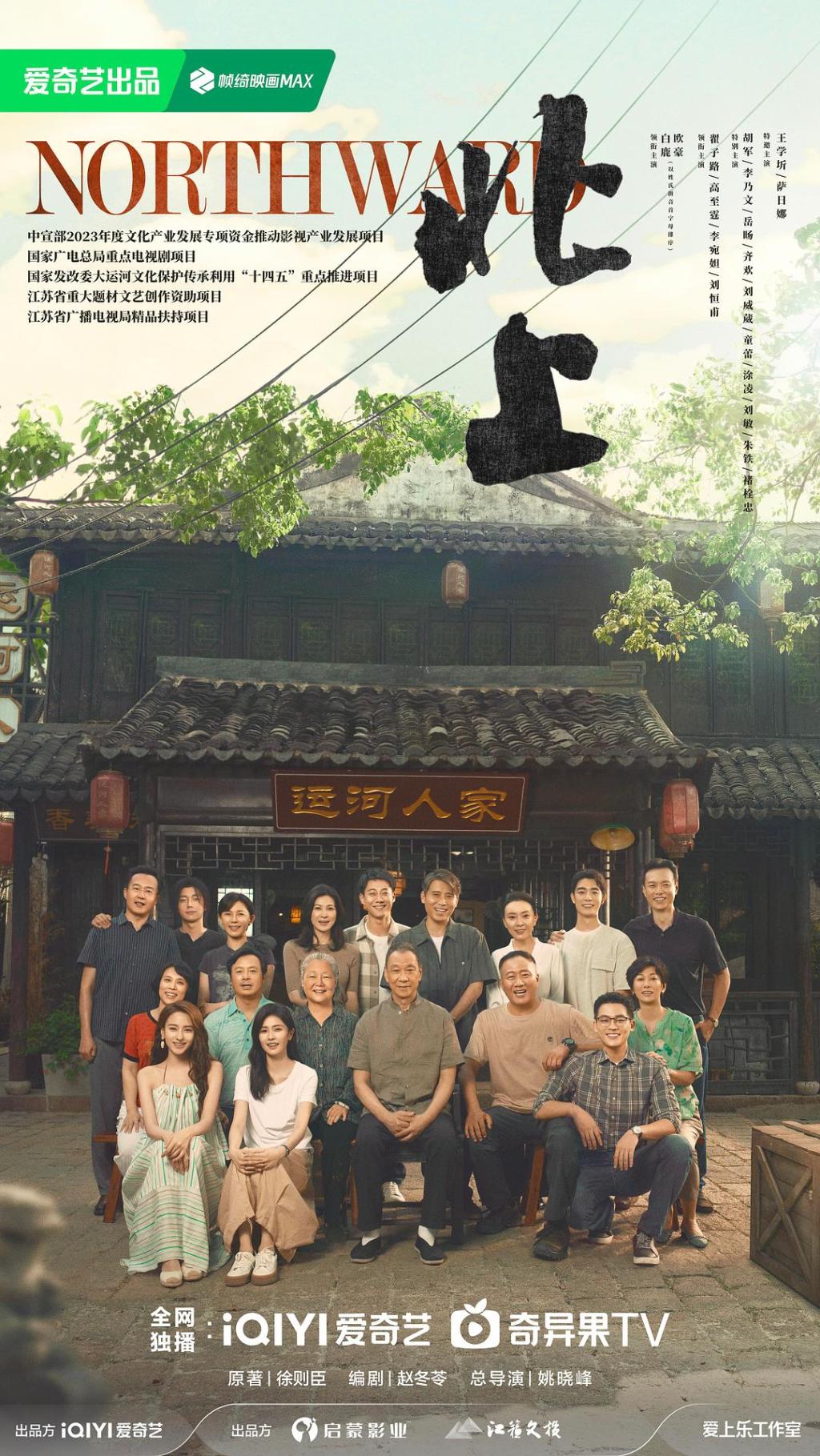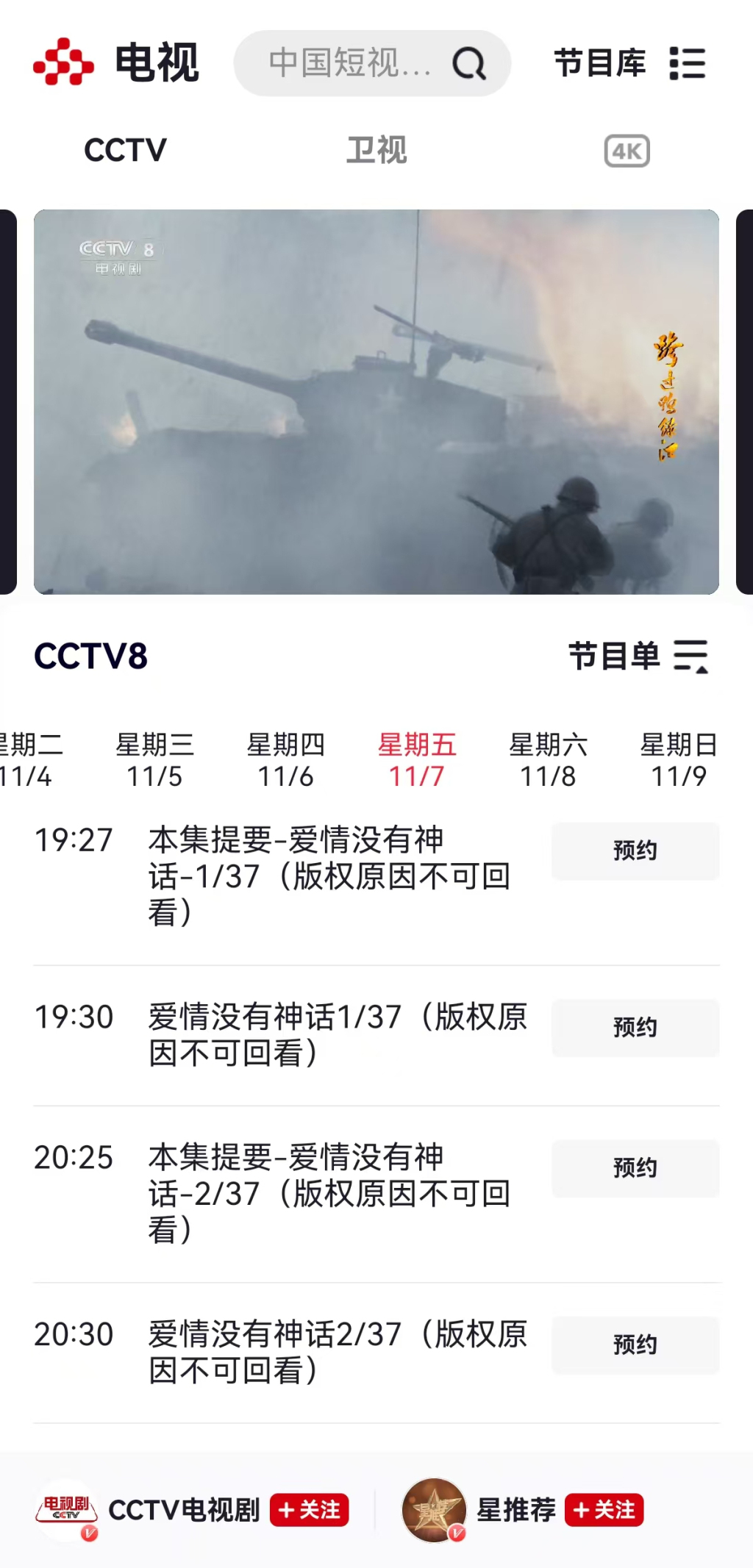
"Golden Wedding", "Parents' Love", "The World", "Long River"... Every name is a collective memory of several generations of "old Chinese DNA moved". It can be said that period dramas have always been an important type of domestic dramas. While other types such as suspense, criminal investigation, anti-corruption, and Qing Dynasty palace dramas have risen and fallen with the development of the times, period dramas can steadily cross the cycle. Not only are there many annual hit dramas of this type, but many period dramas can also form a long-tail effect, allowing the audience to watch them frequently and always find new things.
In 2025, the TV series "Northward" was broadcast, and its portrayal of the millennial generation sparked widespread heated discussion. Some viewers lamented that "period dramas have been set in the millennium" and "it turns out that 25 years have passed since the millennium." Obviously, as the narrative time of period dramas has gradually moved from the 1950s and 1960s to the millennium, the main characters to be told in period dramas have come to the post-80s and post-90s.
Yes, my friends, we are old enough to carry the reins of period dramas.

Poster of "Northward"
So, what is the charm of period dramas? And why is it generally acknowledged to be difficult to create? Let us review period dramas over the past decade, appreciate the changes in narrative themes and narrative eras, and talk about the creation and development of this type of drama.
How do period dramas write about the post-80s and post-90s generations?
Generally speaking, period dramas are divided into two categories. One category is based on micro-family life as the narrative axis, reflecting the development of the times and the transformation of Chinese family values through the ups and downs of a family over the past few decades. Representative works of this type include "Golden Wedding", "Parental Love", "The World", and "People in the Alley". The other category is based on macro-era nodes as the narrative focus, organizing the lives and struggles of small people to reflect the themes of changes in the times and major historical nodes, and then showing China's contemporary social development. Representative works of this type include "A Family in Wenzhou", "A Flowing River", and "Mountains and Seas".

Stills from Parents' Love
In terms of narrative time, most dramas of this type focus on the period before the millennium.
"Parents' Love", broadcast in 2014, tells the story of the marriage life of navy officer Jiang Defu and capitalist lady An Jie, which spans half a century. The drama covers the period from before liberation to the 2000s. Director Kong Sheng once said when explaining the creation of the drama: "We need to go back in history to understand our parents. This is to be responsible to history and to ourselves. We hope that through this work, some viewers will have the desire to talk to their parents about their stories, review their life journeys, and understand and sympathize with their parents' hardships."
The 2017 drama Chicken Feathers Flying to the Sky, starring Zhang Yi and Yin Tao, revolves around the family of Yiwu businessman Chen Jianghe, who started out by "trading chicken feathers for sugar", witnessing the rise of the small commodity market from scratch, and incorporating the themes of honest management and family inheritance. The timeline starts from the early days of reform and opening up in the 1980s and 1990s, when the Yiwu small commodity market sprouted and the individual economy became legal, to China's accession to the WTO in 2001, the explosion of foreign trade, and then to the impact of e-commerce on traditional commerce and the "Belt and Road" initiative in the early 21st century.

Stills from "Chicken Feathers Flying to the Sky"
"In the Distance" in 2018 tells the development history of the express delivery industry from manual sorting to intelligent logistics, and depicts the entrepreneurial legend of a small person growing into an entrepreneur. The story is set in the 2000s-2010s, showing the characteristics of the era of the rise of e-commerce and the explosive growth of the express delivery industry in that decade.
From the arduous journey of our grandparents to the struggles of our parents, the narrative time of period dramas is moving closer to the present. As mentioned in the previous article, Going North, it is obvious that the narrative of period dramas has come to our generation - those born in the 1980s and 1990s.

Stills from "In the Distance"
"Millennials" have been portrayed in many TV dramas in the past, but most of them are in the youth campus drama genre, in the filter of youth nostalgia, for those born in the 80s and 90s to reminisce about their painful youth. However, limited to the construction of campus, youth, and love elements, there have not been a large number of works that can better show the overall style of this generation, or even the changes of the times. After thinking about it, the author can only think of "Struggle", which is biased towards youth idols but not without realistic colors. It focuses on the struggles of Beijing's post-80s youth in the workplace and marriage, showing their ideals and pursuits, and also records the era of the bursting of the Internet bubble and the soaring housing prices in big cities in the early 21st century.
In good period life dramas, we can often see the deep binding of the symbols of the times and ordinary people, such as "chicken feathers for sugar" and "Yiwu small commodities" in "Chicken Feathers Flying to the Sky" symbolizing the grassroots vitality of China's market economy; for example, "Alley People" reflects the people's livelihood housing problems in the process of urbanization through "factory house exchange" and "hutong demolition". We can also see the strong correlation between the fate of characters and policies, such as the Zhou family's children in "The World" who went to the north and south of the motherland like dandelions because of the "going to the mountains and the countryside" policy. We can also see the exquisite combination of realistic criticism and warm narrative, such as Shuihua in "Mountains and Seas" was forced to marry. We can see the criticism of the rural marriage problem at that time, and we can also see the tenacity of Shuihua, a woman, who became a "heroine" among ordinary people. We like period life dramas because we can always see the shadows and stories of ourselves, our families, and our friends in them.

Stills from "Mountains and Seas"
But how to write about the post-80s and post-90s in the creation of period dramas? It is very likely that this will become a new breakthrough in the creation of period life dramas, but its creation is also very difficult. Because to tell a generation from a macro perspective, we must grasp the commonalities of the generation's spirit, life, and predicament. For the time and space that is farther away from the present, we tend to have clearer reflections and summaries and qualitative tone, while the time and space that is closer to the present, we often lack sufficient rumination and summary.
Moreover, as collectivism fades and the Internet tide sweeps everything, the individual differences of the post-80s and post-90s generations, and even younger generations, are becoming increasingly greater. Perhaps it is much more difficult to "summarize" and "write" about them in creation than to write about their parents and grandparents. What are the symbols of the era of the post-80s and post-90s generations? What policies changed the fate of their generation? How did they accept their own ordinariness or create their own epic?
Why is it difficult to create period dramas?
When it comes to creation, we must admit that period dramas are extremely difficult to create, which is also why their output is low and the threshold for creation is high.
For example, we talked about the symbols of the times earlier. In fact, the selection of symbols of the times and the risk of obsolescence are issues that must be carefully considered when creating period life dramas. Some typical images are time-sensitive. For example, the "returnees" and "Internet bubble" in "Struggle" were very characteristic of the times when they were broadcast in 2007, but they seem a bit outdated now. Now they may need to be updated with new symbols such as "AI entrepreneurship", otherwise they will be easily considered out of touch with the times by the audience. At the same time, content involving policy changes is sensitive. For example, "The Great River" involves reform and opening up, state-owned enterprise restructuring and other aspects. It has a good balance between the record of the times, the reflection of the times and the progress of the times when it was created. However, "The Great River" was created by Noon Sunshine after all. This balance ability is not possessed by every creative production team, and it may cause controversy if it is not careful.

"A Flowing River" poster
In character creation, period dramas must especially ensure the universality and uniqueness of characters under the general principle of authenticity. It is necessary to show group portraits, such as the rural youth group represented by Sun Shaoping and Sun Shaoan in "Ordinary World", and to give characters unique memory points, such as the role of Zheng Juan in "The World" that has aroused much discussion and attention. In addition, when young actors interpret the roles of period dramas, there are objective generational differences, and subjectively their acting skills are still lacking in refinement, which sometimes inevitably fails to satisfy the audience. For example, Fan Chengcheng's performance in "Alley People" caused some controversy when it was broadcast. But in dramas such as "Love Forever" that fit his growth experience and age, his performance is naturally much more credible.
In addition, in period dramas, life details such as clothing, dialects, utensils, and social customs need to be accurately restored, so the reproduction of such scenes of the times also faces cost and technical limitations. For example, in the rural drama "A Flowing River", in order to reconstruct the rural landscape of the 1970s and 1980s, a village was built on the spot, and the scene was changed and changed according to the progress of the script. For example, the use of Ningxia and Fujian dialects by the actors in "Mountains and Seas" greatly enhances the realism of the drama. However, this kind of detailed research on cultural customs requires the formation of a professional team to conduct field surveys and the organization of actors for collective learning, and its invisible time and economic costs are also high.

Poster of "The World"
Moreover, the narratives in period dramas often span decades, and the coherence of cross-period narratives is also a major challenge. The rhythm of time jumps is crucial. For example, the script of "The World" adopts a dual-line structure of "chronicle + family chronicle". The difficulty of writing this structure is difficult for screenwriters who are not experienced and technically strong to control. In addition, during the shooting, details such as props (such as enamel pots) and lines (such as "ten thousand yuan households") are needed to achieve a natural transition to avoid the plot appearing stiff. At the same time, there are also problems in matching the age of the actors with the life cycle of the characters. When middle-aged actors play the role of teenagers, even if they rely on makeup and light and shadow technology, the persuasiveness of the performance may be affected. For example, Lei Jiayin faced controversy when he played the young Zhou Bingkun.
In addition, from a commercial perspective, there may be a conflict between the social value and commercial value of period dramas. For example, "Mountains and Seas" and "The World" have good reputations and high popularity, and are all popular dramas among the people. However, because the content of their dramas is concentrated in scenes of the past, the placement of contemporary product advertisements is limited. In particular, rural scenes are difficult to attract fast-moving consumer goods brands. Therefore, the platform can only mainly use mid-insert advertisements and member fees to share the costs, facing greater cost recovery pressure.
Regardless of how the creation of a period drama is like an artistic practice of dancing in shackles, it takes the fate of small people as the starting point, and through elements such as family, affection, and love, it shows the life and struggle of ordinary people in the context of the great era, which resonates strongly with the audience. From a social perspective, period dramas are not only entertainment works, but also cultural carriers that record the changes of the times. They reflect social problems, policy changes, and changes in people's ideas in different historical periods. While enjoying the story and recalling the past, the audience can also have a deeper understanding of the past era. Through the mirror of the times, it triggers our in-depth thinking about "where we come from and where we are going". This is also the fundamental reason why this type of drama still has strong vitality after years of baptism, industry iterations, and market turmoil.


